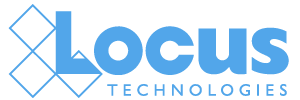Locus’ Unified Platform for Managing Water and Energy in Data Centers
We will explore the environmental impacts of processing power, from the embodied carbon to the water and energy used in their operations.
We will explore the environmental impacts of processing power, from the embodied carbon to the water and energy used in their operations.
Learn which EHS software features offer the best ROI for industrial operations.
Environmental data may seem abstract, but when it comes to environmental pollution or sustainability, they can be a matter of life and death.
By 1992, Duplan and Buckle weren’t just theorizing about AI and automation systems – they were implementing these concepts through the ITEMS.
The vision of an integrated Environmental Data Management System that automated data handling from field to lab to report generation.
Discover the top 10 features that water utilities should prioritize when selecting modern water management software.
The EPA set a course of action for addressing PFAS in drinking waters. Attention is turning to industrial and municipal wastewaters.
Industrial water reporting tools are a mission-critical component of environmental compliance and resource management strategies.
Locus wastewater management software is an essential tool in helping facilities stay compliant, reduce risk, and operate more efficiently.
The ability to unify, visualize, and act on information across platforms isn’t a luxury—it’s now the baseline for EHS software.
Locus Technologies » Locus Platform » Page 4
299 Fairchild Drive
Mountain View, CA 94043
P: +1 (650) 960-1640
F: +1 (415) 360-5889
Locus Technologies provides cloud-based environmental software and mobile solutions for EHS, sustainability management, GHG reporting, water quality management, risk management, and analytical, geologic, and ecologic environmental data management.
